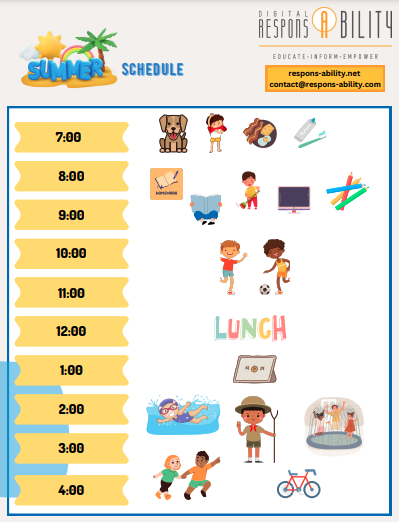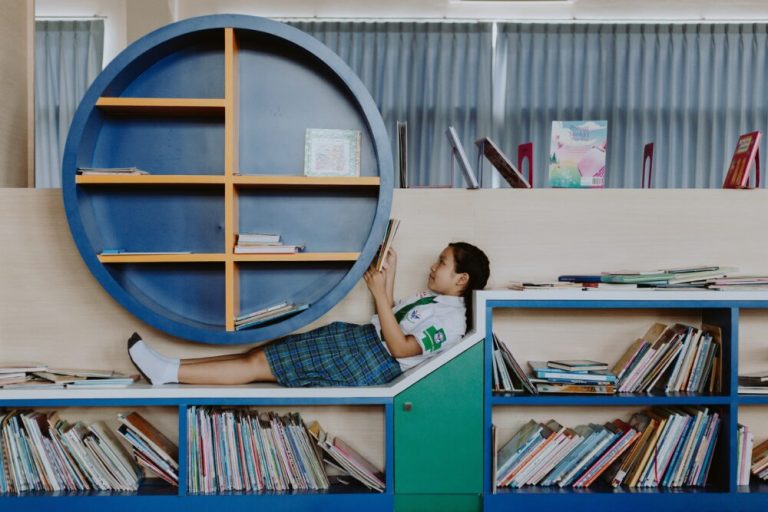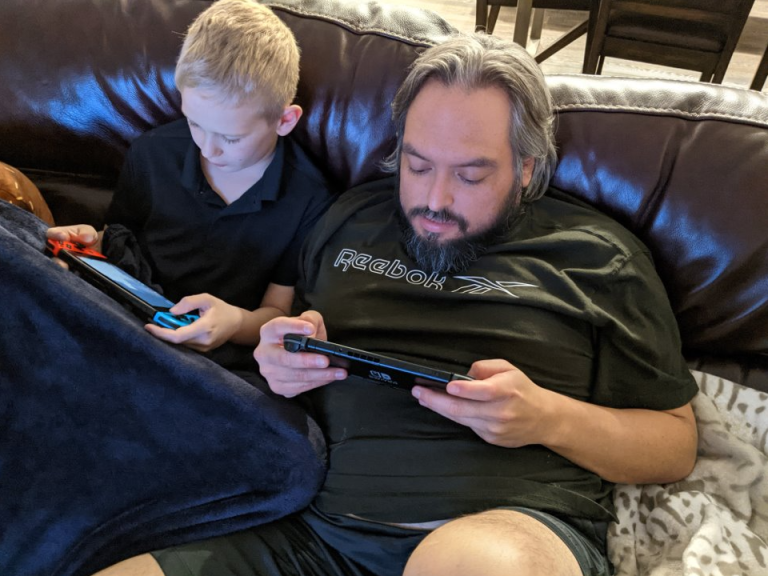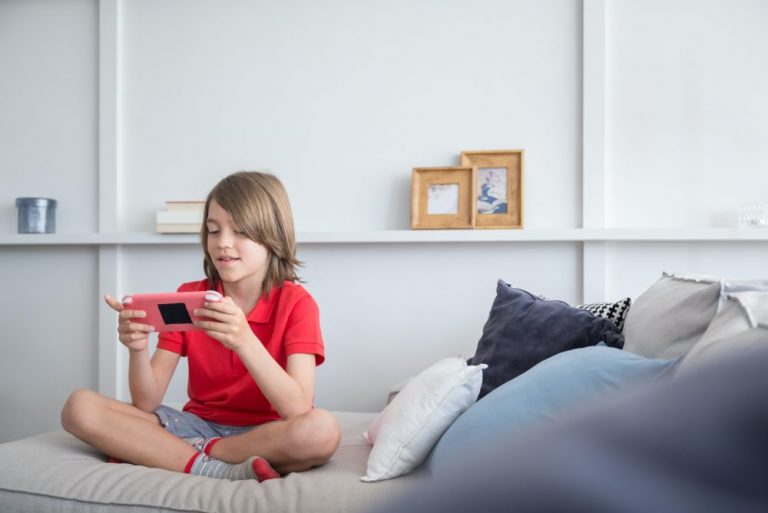
Anyone else start the summer really strong with a screen time limits, rules, checklists, etc?
Did it all go out the window as the summer progressed?
Honestly, there is no shame in relaxing rules a bit.
The reality is, most of us at least try to be aware of the screentime habits of our children, and ourselves. However, sometimes we beat ourselves for not living up to standards set by complete strangers who don’t know our family or their needs.
It’s good to have goals and to be aware of what our children are consuming, however, that doesn’t mean we have to be perfect. All goals are just that, goals or objectives we are hoping to achieve.
Here are a couple of things to keep in mind when trying to set limits or boundaries with screen time.
- Not all screentime is created equal. There’s a difference between passive an active screentime.
- Allowing increased screentime for whatever reason is not the end of the world.
- Creating screentime rules should be a constant process in evaluating what works for you and what doesn’t. It’s okay to revisit and revise as your schedule and needs change.
- It’s also okay to have different rules for different days of the week, different periods of life, etc.

Last year, during the school year, we used something like this chart, to make sure my 6-year-old finished specific tasks, including learning time on a computer- which is active screen time- before he was able to have passive or screen time just for entertainment.
When summer started, we had to rearrange this plan, and it took a couple of tries, to get a system that worked for us. Even at 6, my son loves a good list he can follow. Initially, our list was too broad, and he just blew through it in less than 30 minutes. We had to re-adjust and make a more specific, hour-based schedule so that he couldn’t just do everything in 30 minutes and then spend hours watching YouTube, even if that’s all he wanted to do.
You might think that not everyone has the luxury to manage their kids this way, whether because they have other duties and obligations, or just aren’t with their kids all day. That’s okay. This is just one example and one tool we can use to try to regulate and be aware of the screen time for our kids.
I did use childcare throughout the summer while working, but I also wanted us to have some time to enjoy the summer. This meant, I needed to create both periods of work time for me and fun time for my son. The best way I could do this was to create a schedule he could follow, which gave me some solid hours of work time.
As school is starting, we are once again assessing what our goals are for each day and how to encourage both active and passive screen time, with boundaries.
Here is an example of what we are trying out right now!
Weekends will probably look different. Holidays, vacations, three-day weekends, sleepovers with friends. All of these can be different factors that may prevent us from exactly following this schedule.
It’s not a big deal!
Schedules are there to serve us, not create more stress if it doesn’t work for that day.
Tips for creating screen time rules:
- Focus on things that interest your child. Help them pick things that will be educational or informative for active screen time.
- Realize that everyone needs some downtime. It’s okay if there is screen time “just for fun” or what is known as passive screen time.
- Think about WHAT is the purpose. For example, you can have a limit on playing video games alone, but allow the time to increase if it’s a social activity, such as with friends or family. Same with watching something like Netflix or (shudder) Youtube.
- Be open to exceptions and adjustments based on need. On a deadline for work? It’s okay to allow some more screen time to finish something. Need to have some one-on-one with another child or a spouse? Allow more screen time, whether it’s active or passive.
- Allow for adjustments and fun. Banning all screens isn’t really effective. If you want to teach your kids to have MORE fun without screens, great. However, they will still encounter computers, tablets, and other screen centered activities at school and with friends. It is better to help them to understand why you have rules in place and want to know about their screen time, so they can make good decisions on their own as they mature and are less regulated by you.
The last thing to address is how to manage screentime. This can be a controversial topic so we won’t spend a lot of time on it. Screentime limits and how you enforce them can be very subjective and conditional based on your environment. You may feel that your child should only play video games for 30 minutes a day. But, what if a parent comes home from work and they play together? Should that time still be strictly enforced? That is something only you can decide for your child and your family.
There are some tools that can help you track and monitor screentime and set some automatic limits or controls.
Ways to enforce/monitor screen time:
- Set a timer and limit the amount of time using a certain device or app.
- Utilize screen time settings on phones and tablets that allow you to set specific amounts of time for both the device and certain apps. There are options for both iphones and android phones.
- If using a gaming console, set time limits using parental controls. This will automatically lock a child out of the device.
Remember, when thinking about screen time and your family, remember a few things: do whatever works best for your family; don’t beat yourself up if that looks different than someone else’s family; realize things will always be changing, and…






